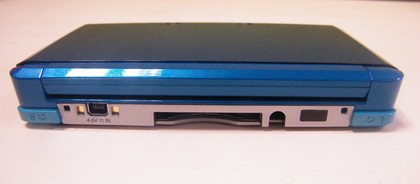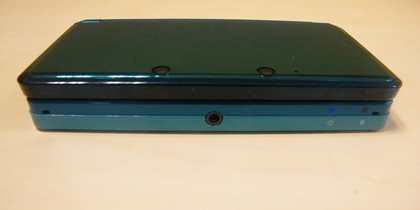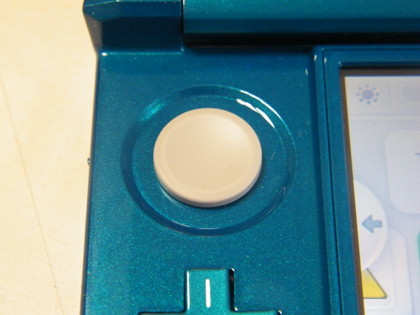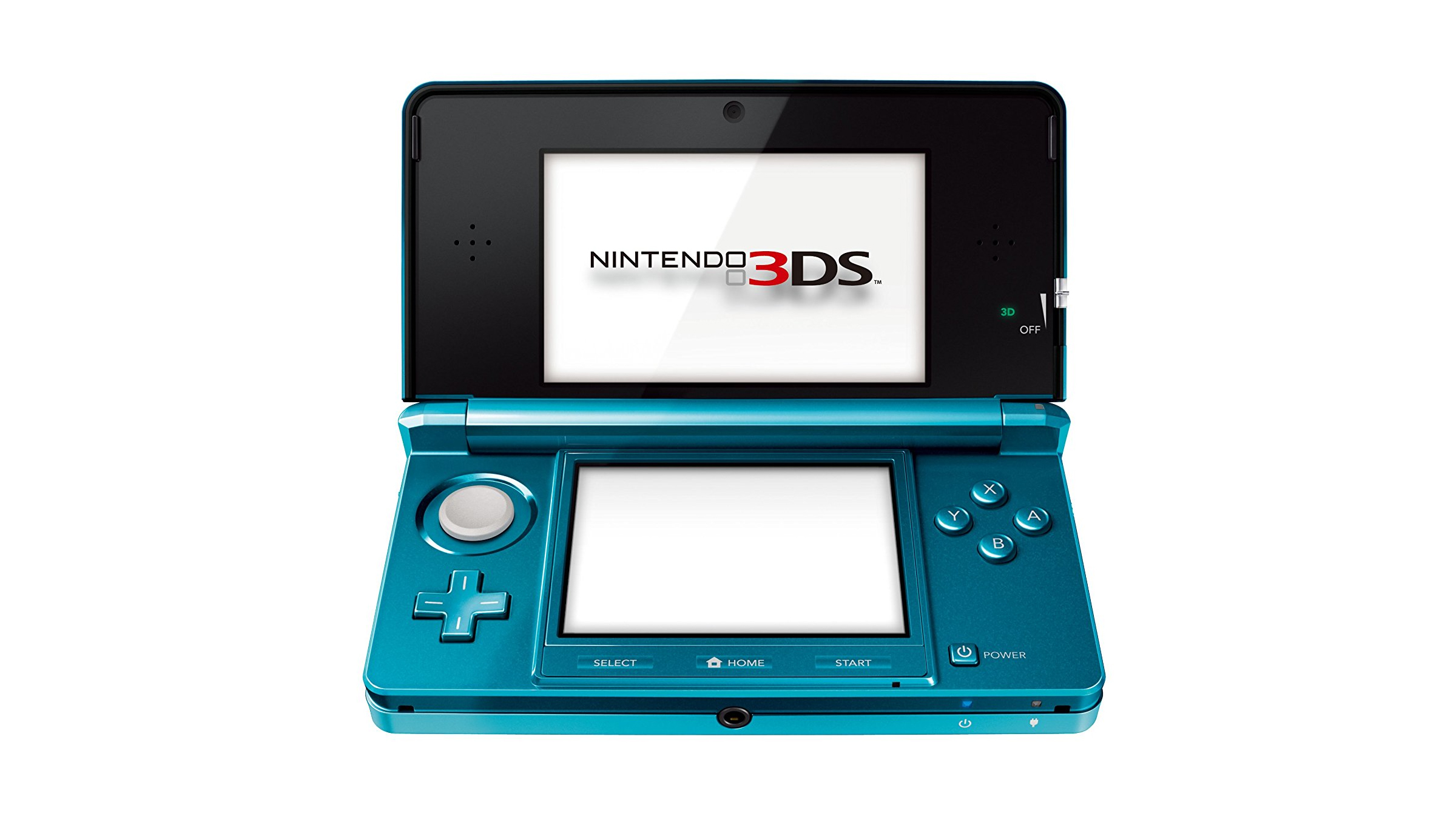Why you can trust TechRadar

To look at the, the Nintendo 3DS is more or less classic DS design.
It's slightly smaller than the DSi in terms of sheer size, at approximately 135mm x 74mm but is a bit thicker at 20mm deep compared to the DSi (137mm x 75mm x 19mm) and weighs around 8 ounces with battery, stylus and SD card on board.

It looks that bit sleeker though, with curved corners, angled edges and shiny gloss finish. This time the lid houses two cameras rather than one (necessary for the 3D camera we'll come on to), both placed centrally at the top of the panel, and each about half the size of the DSi's camera.
Placed at the back on either hinge, as with the DSi, are the two shoulder buttons which look slightly smaller this time in that they don't protrude quite so much as on the last model. The hinges themselves carry on the gradual lines of the device to complete the look.

Lift the lid on the 3DS and the more sophisticated design ethos is continued with a black, gloss finish border that makes up the front face of the 3DS and surrounds the top screen. It's a neat departure from the single colour-scheme we're used to.
In terms of how the new device is to hold, the 3DS doesn't feel quite so expensive or solid as something like the Sony PSP. The d-pad, face and shoulder buttons are small with that distinctly 'clicky' feel. We'd also say that when fully open, the top panel encroaches on the space your fingers need around the shoulder buttons. A minor quibble that's only noticed every now and then, and who's to say we don't have chubby fingers?


Where the 3DS does trump the PSP in terms of control, however, is with its new analogue nub – officially called the Circle Pad. The point of analogue control has obviously been a tough nut to crack for designers of portable games consoles recently.

Sony's current handheld has a flat nub with imprinted grip, something that has been criticised for being difficult to manoeuvre because of its flat design that sees players slide their thumb around awkwardly rather than pushing and pulling as they would with a stick.

Having gone down the nub route as well, Nintendo's Circle Pad is still a bit of a chore to push around compared to a proper stick as well and Sony's NGP will likely take the analogue control crown when it releases with two full-on sticks.
What does help the Nintendo 3DS, however is the fact that the Circle Pad has a concave surface. The shallow banks of the nub act as a nest for your thumb and mean that you have at least something to push and pull against to an extent without slipping off.

The Circle Pad was responsive with a quick snap back to the centre once it was released. We had a couple of handhelds to play with, however, and one demonstrated a particularly sticky Pad which didn't come all the way back to the middle if it was pushed to its boundaries
Since this was just one case, though, we have to give the 3DS the benefit of the doubt, although it does make us wonder whether the nub design could be prone to stickiness over time.
Also of note the placement of the front facing camera, now above the screen rather than on the join between the panels and the addition of three new buttons (Home, Start and Select) under the bottom screen.

Getting onto the technology that drives the 3DS, that lower screen is LCD with the resistive touch capabilities that can be controlled with the included, 4mm, extendible stylus your finger. It measures 3.02 inches and has a 320 x 240 resolution.
The top screen is the important one though. It makes use of lenticular lens technology to create the final 3D image. Simply put, the screen uses a series of long thin lenses called lenticules that have cured fronts.

Because of their shape the lenticules direct the pixels' light in different directions and each eye sees an alternate column of pixels. You can probably fill in the rest: Two images are rendered by the 3DS' GPU, they are sent to separate eyes by the lenticules and, as you probably know, by seeing two slightly separated versions of the same image we get glorious 3D.
Of course, to look as good as the current Nintendo DSi, the 3DS needs to have twice the resolution, and it has exactly that and then some.
Where the DSi screen ran at a resolution of 256 x 192 This time we're treated to a 3.53 inch wide-screen LCD display zapping 16.77 million colours in what Nintendo's calling 800 x 240 pixel resolution (what it actually means is you get 400 x 240 in each eye and then the same in both eyes when in 2D mode). Not only does the 3DS present you with unassisted 3D then, it's bested its predecessors significantly in terms of resolution in the 2D arena as well.

PAPER: The 3DS comes with a wad-like and not-exactly-environmentally-friendly multi-lingual user guide
What's driving the 3D machine hasn't actually been officially disclosed and without being able to take the console to pieces just yet we have to rely on reports that the handheld contains a twin ARM11 266 MHz processor and the PICA200 GPU from Digital Media Professionals.
Also reported is 1.5GB of flash storage, 63MB of RAM (although some contesting reports suggest 96MB) and 4MB of dedicated video memory. Also tucked away inside the body is a motion-sensor and Gyroscope, which will come into play later.
All this is powered by a battery that Nintendo has estimated will offer 3 – 5 hours of life and longer when playing games from the DS back-catalogue using the 3DS' backwards compatibility.
Not too different to the DSi then, although after putting the 3DS through its paces it seems that the avid amongst us will only hit the minimum estimation - we were out of juice at three hours of constant play in full 3D.
Nintendo does, however, provide a nice little charging cradle as part of the package and the handheld had no problem lasting the day when in sleep mode.
